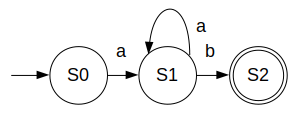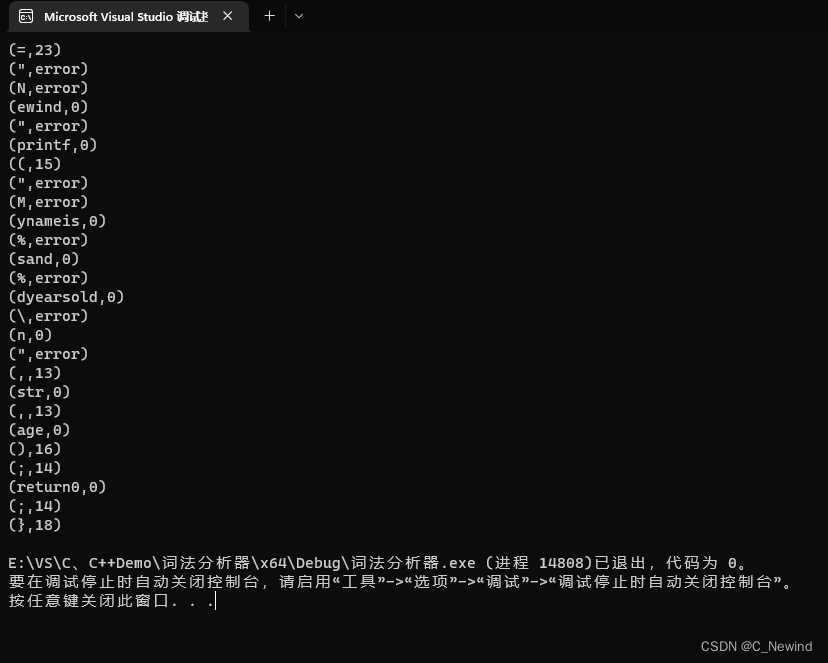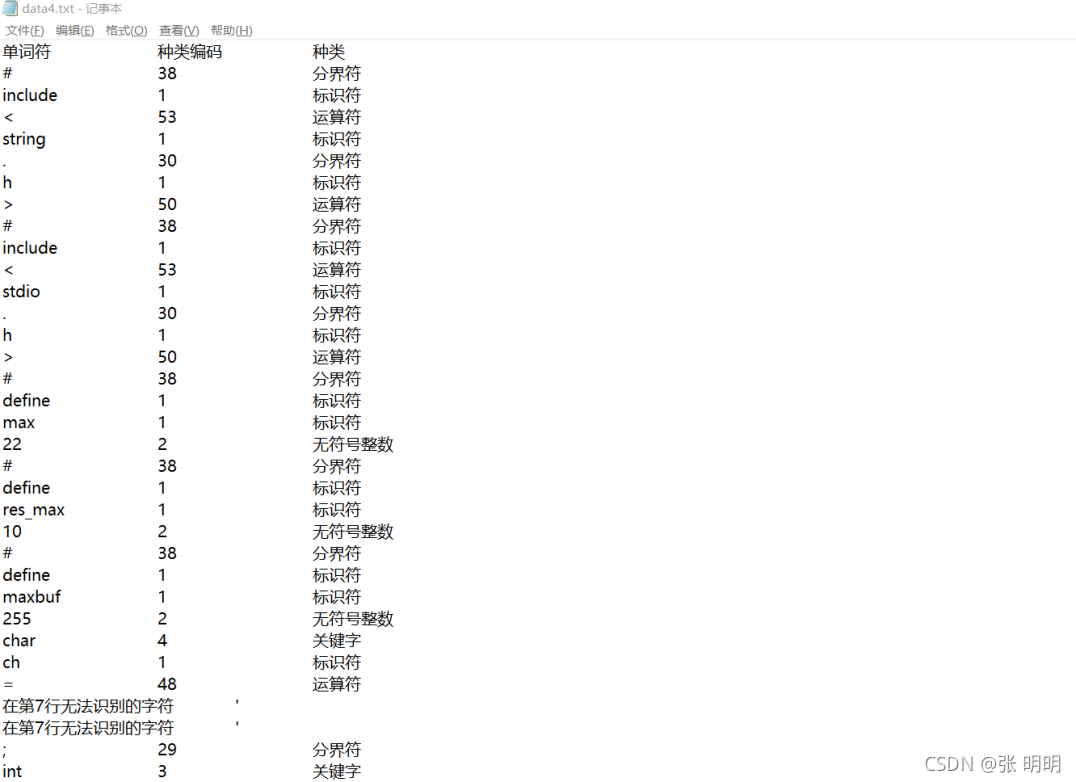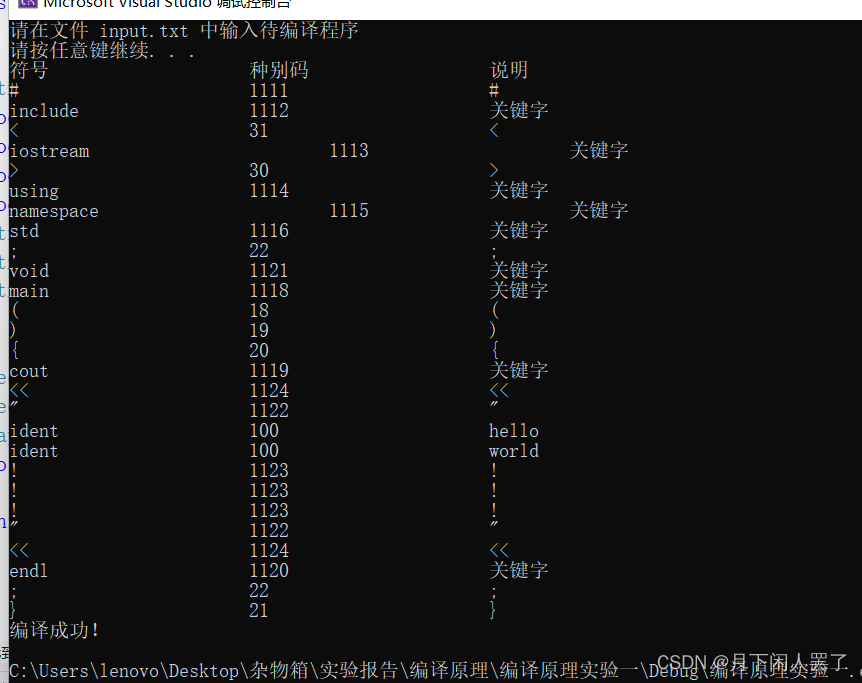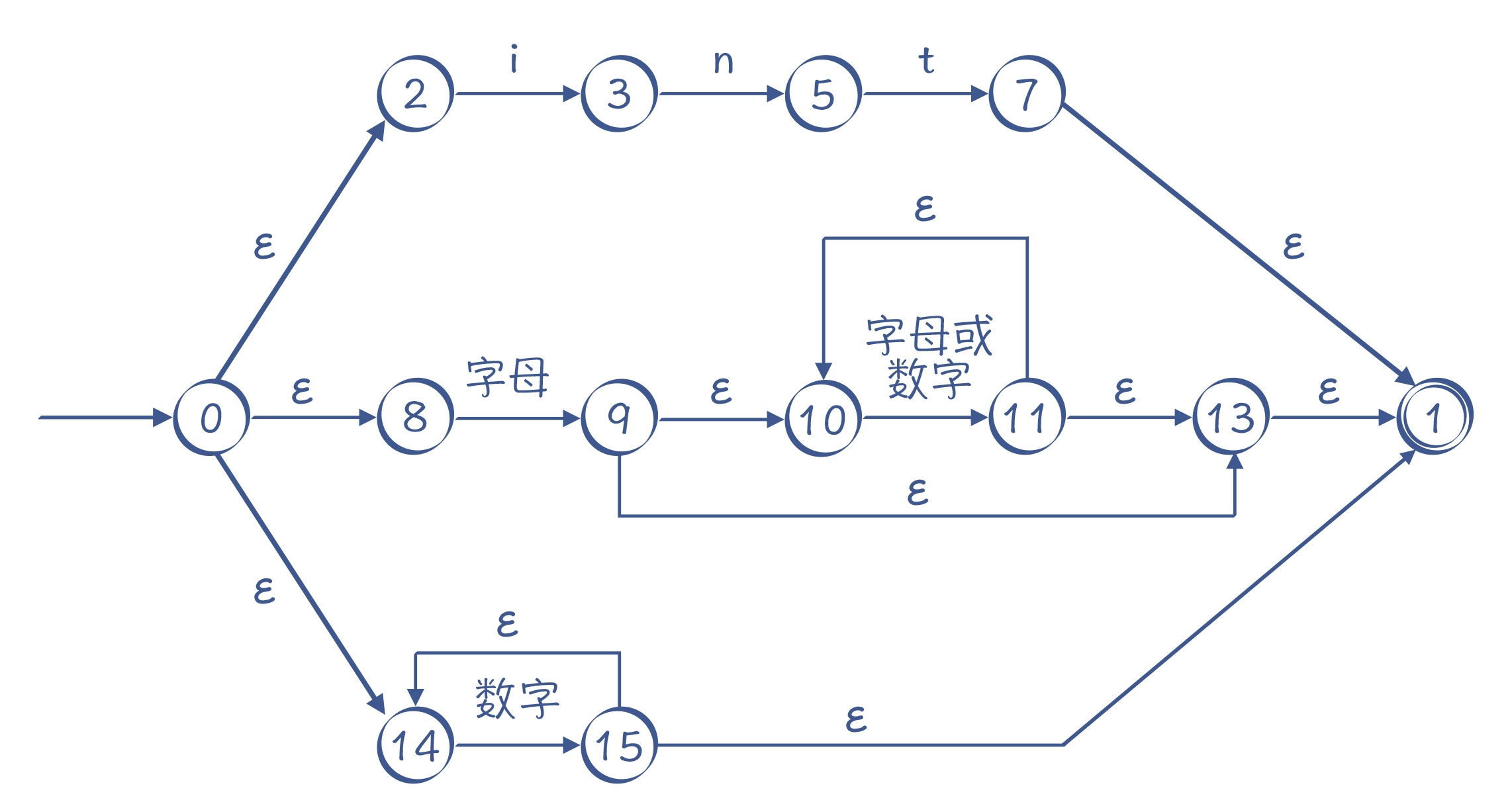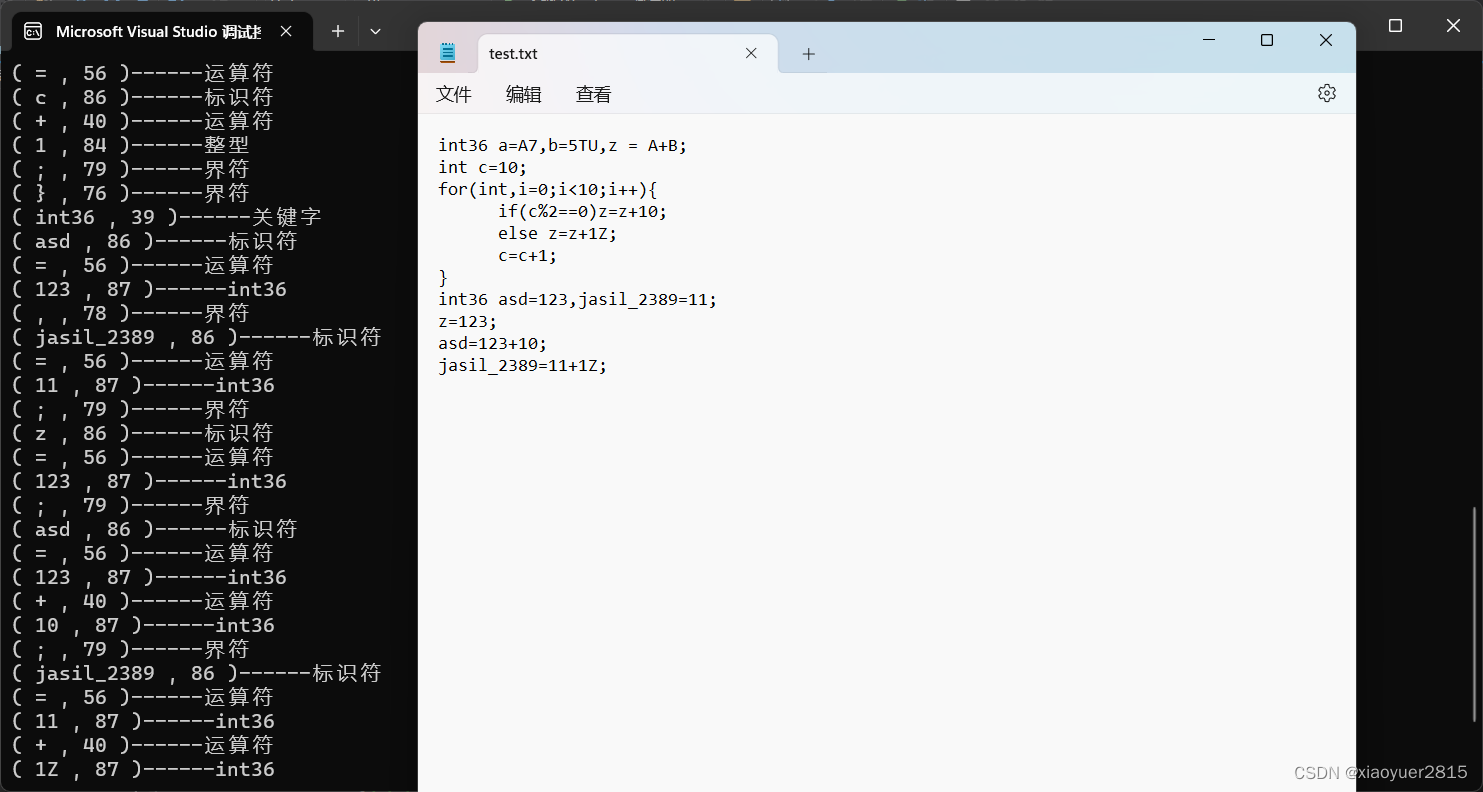标题:词法分析器
本人最近在学习编译原理,刚刚学到词法分析器,心想着挺好玩,就想着自己写一个,奈何一没有系统的学过c语言,只是粗略的看过一遍K&R的c语言书,所以水平尚浅,代码有许多冗长之处,二是刚学这一块,有些概念还不太清楚,本着练习c语言的目的将词法分析器写完。大家借鉴借鉴就好,如果有需要的小伙伴可自取自行修改。我看的编译原理是鲁斌的一本编译原理与实践(不建议小伙伴看,这本书代码很不全,而且有错误,但是本校还没发书,所以只好用这本),编写的是L语言----一种类Pascal语言。
废话不多说,上正题:
词法分析器,又称为扫描器,功能是输入源程序,进行词法分析,输出单词符号。
对于一个词法分析器来说,应该执行的功能为:
1:对源程序进行预处理工作,包括滤掉源程序中的无用程序,如注释,空格,换行,等不影响程序语法,语义的结构。(至少可以滤掉空格,其他可自行添加)
2:对源程序出现的非法字符进行检查
3:可建立符号表,用于记录源程序中的标识符和常数的信息,包括名称,各种属性等。
词法分析器主要依据语法规则进行工作,本篇用到的所有词法皆在L_Word.txt文件里,下面以图片形式给出。
描述词法分析器规则的有效工具主要是正规式和有限自动机(本人还没学到这,但写词法分析器也没用到)
实现的功能:
能够识别关键字,标识符,整数,浮点数,指数,一些运算符和界符。
能够对输入的源代码进行分析,输出各种标识符,及其他们的种别编码,及其在符号表中的地址(本篇输出的都是零,也就是word.addr,没有实现,小伙伴可自行实现)
注:
1:没有实现过滤注释的功能。
2:没有实现符号表
3:没有实现字符类型,布尔类型
另外注明一点:宏定义#define MAXWORD 100 处,如果将MAXWORD定义的小了,可能经词法分析器输出的要比源程序的词少,具体原因没有找(懒)
各种文件如下:
L_Word.txt文件如下:

代码部分
代码分为三部分
第一部分为头文件
L_h文件,内有要用到的库函数及宏
#pragma once
#include <stdio.h>
#include <ctype.h>
#include <string.h>#define MAXWORD 100 //定义最长的标识符不可以超过100/*token结构,词法分析器识别出的信息用此结构标识*/
typedef struct WordToken {int code; //单词种别编码,L语言编码在L_Word.txt文件中int addr; //单词在符号表中登记项的指针,仅用于标识符和常数,其他情况下是零
}WT;/*L语言关键字*/
extern char Keywordtab[27][10];void sort(char ch[]);int reserve(char str[]);
代码所用关键字为Key.cpp,内含关键字和三种运算符and or not
#pragma once
char Keywordtab[27][10] = { "begin","end", "integer", "char", "bool","real","input", "output",
"program","read","write","for", "to", "while", "do", "repeat","until", "if", "then", "else",
"true","false","var","const","and","or","not" };
主要代码文件为sort.cpp
#pragma once
#include "L.h"/*用来识别不同类型单词符号*/
void sort(char ch[]) {int reserve(char str[]);int p = 0;while (ch[p] != '\0') {while (ch[p] == ' ')p++;int i = 0;char str[MAXWORD] = {};WT word;word.addr = 0;if (isalpha(ch[p])) { //如果首字符是字母WT word;word.addr = 0;do {str[i++] = ch[p++];} while (isalpha(ch[p]) || isdigit(ch[p]));str[i] = '\0';word.code = reserve(str); //是-1没找到关键字if (word.code == -1)word.code = 39;printf("%s\t%d\t%d\n", str, word.code, word.addr);}else if (isdigit(ch[p])) {word.addr = 0;do {str[i++] = ch[p++];} while (isdigit(ch[p])); //出循环时,ch[p]已不是数字if (ch[p] == '.') { //判断如12.7型的浮点数str[i] = ch[p];i++, p++;while (isdigit(ch[p]))str[i++] = ch[p++];str[i] = '\0';word.code = 41;printf("%s\t%d\t%d\n", str, word.code, word.addr);}else if (ch[p] == 'e') {str[i] = ch[p];i++, p++;if (ch[p] == '-') { //判断例如12e-7型的指数str[i] = ch[p];i++, p++;while (isdigit(ch[p]))str[i++] = ch[p++];str[p] = '\0';word.code = 41;printf("%s\t%d\t%d\n", str, word.code, word.addr);}else //判断例如2e3型的指数{while (isdigit(ch[p]))str[i++] = ch[p++];str[i] = '\0';word.code = 41;printf("%s\t%d\t%d\n", str, word.code, word.addr);}}else //判断例如148型的整数{str[i] = '\0';word.code = 40;printf("%s\t%d\t%d\n", str, word.code, word.addr);}}/*有争议的字符*/else if (ch[p] == '/'){if (ch[p + 1] == '*') {str[0] = ch[p];str[1] = ch[p+1];str[2] = '\0';word.code = 53;printf("%s\t%d\t%d\n", str, word.code, word.addr);p = p + 2;}else{str[0] = ch[p];str[1] = '\0';word.code = 28;printf("%s\t%d\t%d\n", str, word.code, word.addr);p++;}}else if (ch[p] == '*'){if (ch[p + 1] == '/') {str[0] = ch[p];str[1] = ch[p+1];str[2] = '\0';word.code = 54;printf("%s\t%d\t%d\n", str, word.code, word.addr);p = p + 2;}else{str[0] = ch[p];str[1] = '\0';word.code = 34;printf("%s\t%d\t%d\n", str, word.code, word.addr);p++;}}else if (ch[p] == '<'){if (ch[p + 1] == '=') {str[0] = ch[p];str[1] = ch[p+1];str[2] = '\0';word.code = 35;printf("%s\t%d\t%d\n", str, word.code, word.addr);p = p + 2;}else if (ch[p + 1] == '>'){str[0] = ch[p];str[1] = ch[p+1];str[2] = '\0';word.code = 37;printf("%s\t%d\t%d\n", str, word.code, word.addr);p = p + 2;}else{str[0] = ch[p];str[1] = '\0';word.code = 30;printf("%s\t%d\t%d\n", str, word.code, word.addr);p++;}}else if (ch[p] == '>'){if (ch[p + 1] == '=') {str[0] = ch[p];str[1] = ch[p+1];str[2] = '\0';word.code = 36;printf("%s\t%d\t%d\n", str, word.code, word.addr);p = p + 2;}else{str[0] = ch[p];str[1] = '\0';word.code = 31;printf("%s\t%d\t%d\n", str, word.code, word.addr);p++;}}else if (ch[p] == ':'){if (ch[p + 1] == '=') {str[0] = ch[p];str[1] = ch[p+1];str[2] = '\0';word.code = 38;printf("%s\t%d\t%d\n", str, word.code, word.addr);p = p + 2;}else{word.code = 46;printf("%c\t%d\t%d\n", ch[p], word.code, word.addr);p++;}}/*无争议字符*/else {switch (ch[p]){case '=': word.code = 29; str[0] = ch[p]; str[1] = '\0'; break;case '-': word.code = 33; str[0] = ch[p]; str[1] = '\0'; break;case '+': word.code = 32; str[0] = ch[p]; str[1] = '\0'; break;case '(': word.code = 44; str[0] = ch[p]; str[1] = '\0'; break;case ')': word.code = 45; str[0] = ch[p]; str[1] = '\0'; break;case '.': word.code = 47; str[0] = ch[p]; str[1] = '\0'; break;case ';': word.code = 48; str[0] = ch[p]; str[1] = '\0'; break;case ',': word.code = 49; str[0] = ch[p]; str[1] = '\0'; break;case '_': word.code = 50; str[0] = ch[p]; str[1] = '\0'; break;case '\'': word.code = 51; str[0] = ch[p]; str[1] = '\0'; break;case '\"': word.code = 52; str[0] = ch[p]; str[1] = '\0'; break;}printf("%s\t%d\t%d\n", str, word.code, word.addr);p++;}}
}
int reserve(char str[])
{for (int i = 0; i<27; i++){if (strcmp(str, Keywordtab[i]) == 0){return i + 1; //关键字的种别码为i+1 的值 }}return -1; //没有找到关键字
}
主函数如下:
#pragma once
#include "L.h"
int main()
{char ch[] = "var x , y , z : real; x := y + z * 60;";printf("经词法分析器分析结果后如下:\n");sort(ch);
}
结果如下:

上述代码在vs2015上运行
本人写博客目的只为加深对词法分析器的理解,代码或有错误,感兴趣的小伙伴可自行下载。

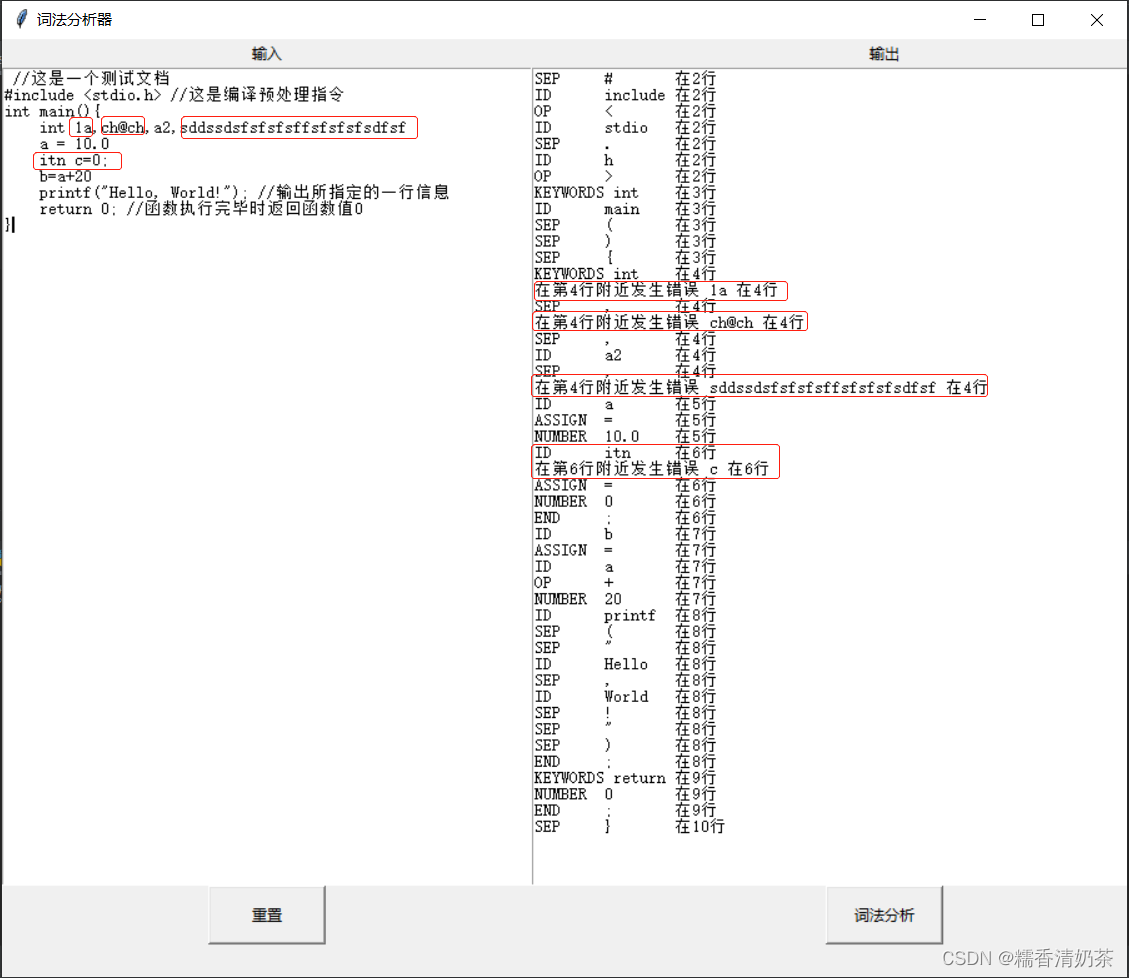

![[编译原理]词法分析器的分析与实现](https://img-blog.csdn.net/20150616134813310)

